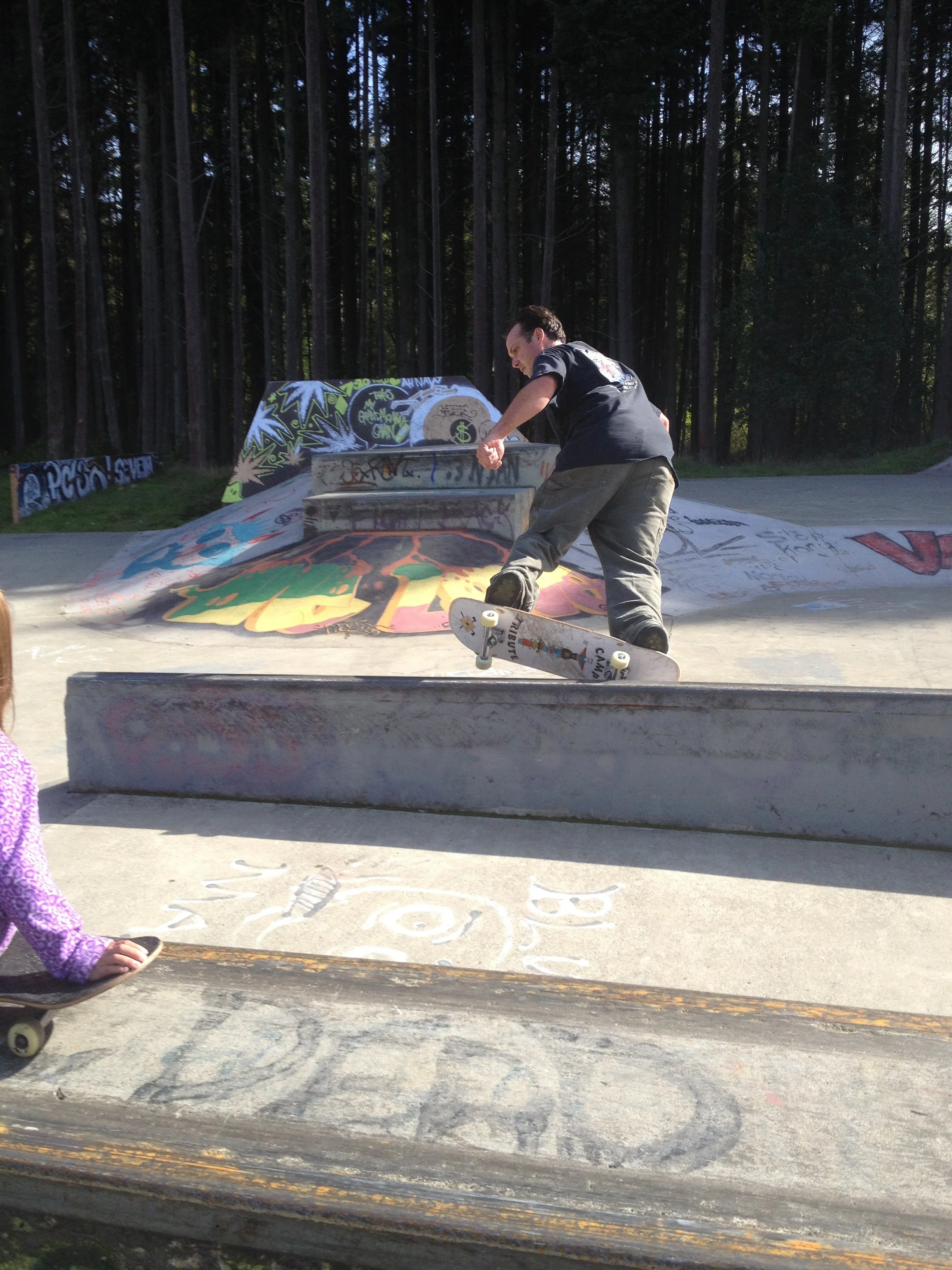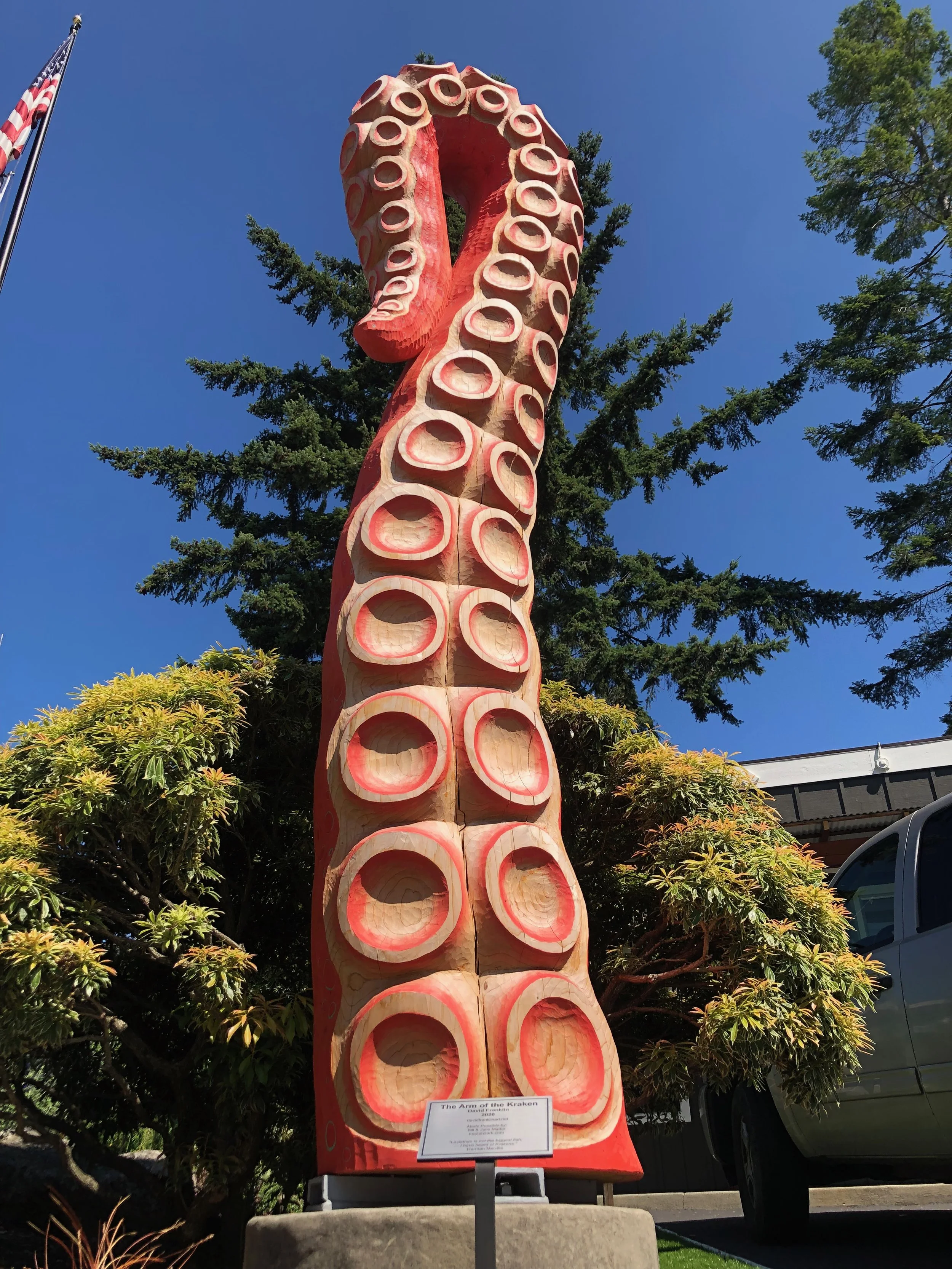making big ideas fly
Indianola sculptor makes a name in public art
Words by Margaret Millmore
The Ghost School — Franklin at work in Wisconsin as a Kohler Co. factory resident artist (Photo: John Michael Kohler Art Center and Kohler Co.)
One would be hard pressed to connect airplane mechanics, graffiti and large-scale art, but for David Franklin, they all coalesced into an amazing adventure of discovery and creativity.
As a teenager, the Indianola-based sculptor joined a graffiti crew in his hometown of Denver while attending airplane mechanic school. His specialty was designing and cutting stencils. “I love the process of drawing, refining my drawing, then cutting the stencil and playing with layers and colors,” he explains.
The crew then painted them in abandoned rail yards throughout the city. To Franklin, the graffiti community was incredibly inspiring. He even met his wife, Joanne, through the crew. The stencil knife work eventually morphed into a love of whittling and carving.
The couple moved to Seattle with the hope of Franklin landing a job at Boeing. However, the company was in the midst of mass layoffs and the job never materialized. Instead, Franklin found work at a print shop in Redmond and discovered a love of Northwest Coastal art.
That passion led him to Becky Blanchard at the Stonington Gallery and an introduction to Duane Pasco, a well-known carver and teacher in Poulsbo. Pasco and his wife took the Franklins under their wing. Franklin would spend more than a decade learning from and working for Pasco, moving to Indianola to be closer to him.
“Living in Indianola a couple of blocks from the beach with some of the best views around felt like we had found paradise, especially after growing up so far from the ocean,” he said. “We still feel like we live in paradise, and have found an incredible community of like-minded creative souls.”
Through Pasco’s tutelage, Franklin was immersed in Western and Northwestern art, learning to work in any coastal graphic and sculptural style. Eventually, his skills developed to the point where he could assist in repairs to Pasco’s projects and create his own pieces for sale. In addition, Pasco introduced him to a number of local artists, which led to supportive roles in their projects.
Expanding on what he had learned, Franklin began to think bigger. Over the years, he developed a substantial portfolio of large-scale art pieces. The larger the piece, the more complex it became, leading Franklin to metal fabricator Kurt Nordquist in Des Moines, WA. Franklin’s earlier mechanical training gave the two a common language. “This is where the airplane mechanics really kicked back in,” Franklin recalls.
They began to design larger and more complex installations. “It turned out that the airframe and structural aspects of airplane mechanic school were critical in my move to bigger and more complex public art projects.”



Franklin also collaborates with several local Native American artists, including his best friend, Brian Perry, who is a Port Gamble S’Klallam Tribal member. A partnership with glass artist Preston Singletary, of Tlingit descent, has led to some stunning public art commissions—most recently the octopus that now sits at Seattle Center’s Climate Pledge Arena.
When Franklin and Singletary submitted their steel and glass octopus model to the arts committee for the new arena, Seattle’s new NHL team had not been publicly named. Only one member of the committee knew that they’d be called the Kraken. Not wanting to influence the committee’s decision, she kept it to herself. As Seattle artist and lead art consultant for the arena, Laura Haddad told the Kitsap Sun, “It was the most compelling piece that we saw. It just was a happy coincidence, I guess.”
When Franklin is commissioned to create public art, he feels it’s important to work closely with the community. “I think public art is really at its best when there is some trust between the artist and the community that allows something new and unique to develop. I try not to approach any project with a lot of preconceived ideas. I really want to approach each community I am working in with open ears, mind and heart. With this perspective, I like to delve into the long history of a place from its most ancient to its present.”
The award-winning artist teaches carving at local colleges, carving clubs and studios around the Pacific Northwest, and he also works with ceramics. His work can be found all over the country. They include an orange kraken tentacle near the Bainbridge Island ferry terminal, a school of metal salmon outside Cheney Stadium in Tacoma, and a sand dune-inspired sculpture in a Denver pedestrian tunnel.
When Franklin isn’t creating, he can be found skateboarding around Indianola or traveling around the country looking for skate shops so he can add to his collection of decks. As projects allow, he converts his studio into a halfpipe, which he calls his own personal treadmill—a place for carving of a different kind.
Photos: David Franklin
Up in arms
Tentacled sea creatures have fascinated Franklin ever since he encountered a giant Pacific octopus while shrimping in Alaska. He set about carving their curving, sculptural forms, and never stopped. He’s created undulating ceramic tentacles, a whimsical wooden Squid Family, the octopus sculpture at Climate Pledge Arena and the towering Arm of the Kraken, welcoming Bainbridge ferry arrivals. Each cephalopod piece is playful and appealing to all ages.
Photos: David Franklin



